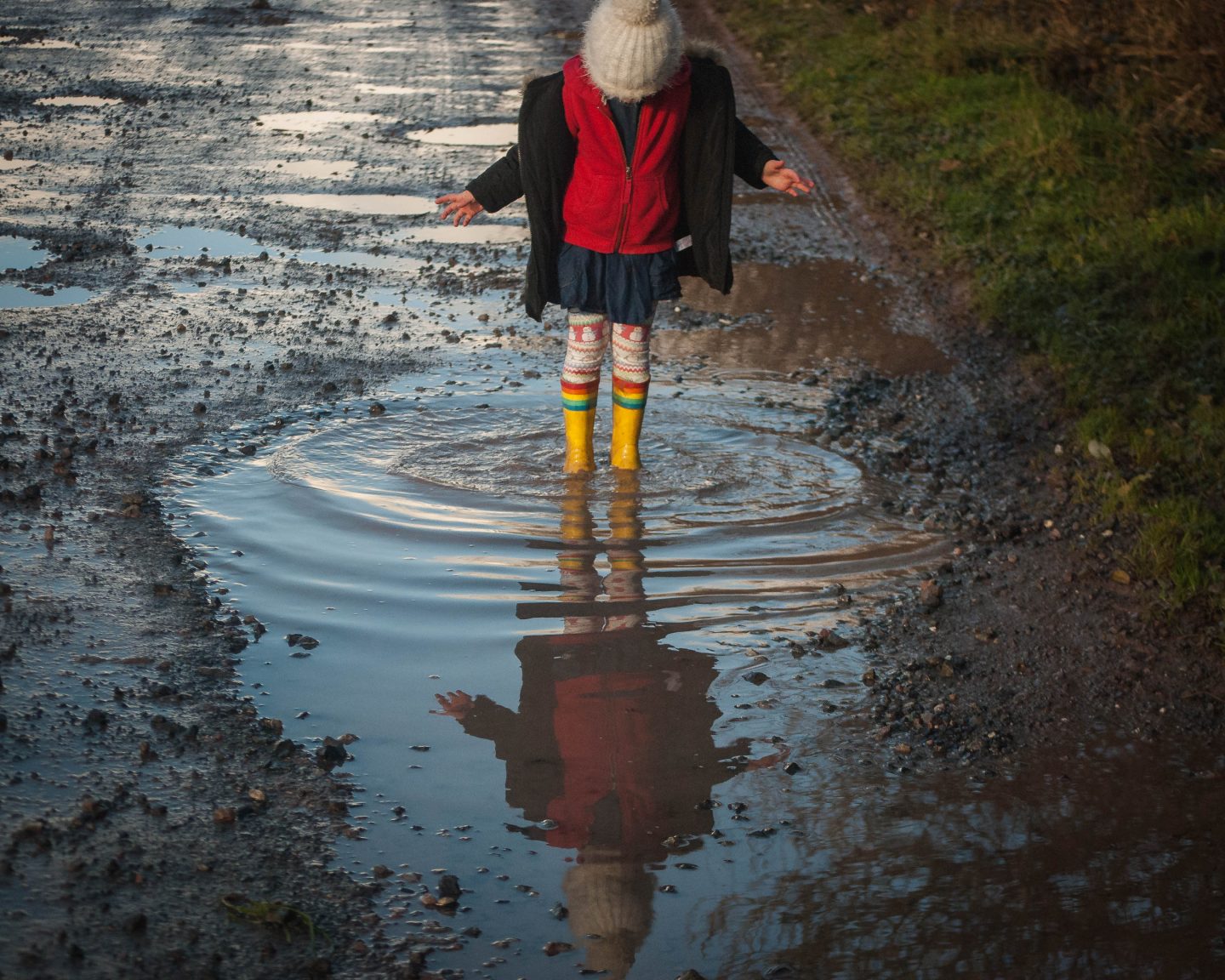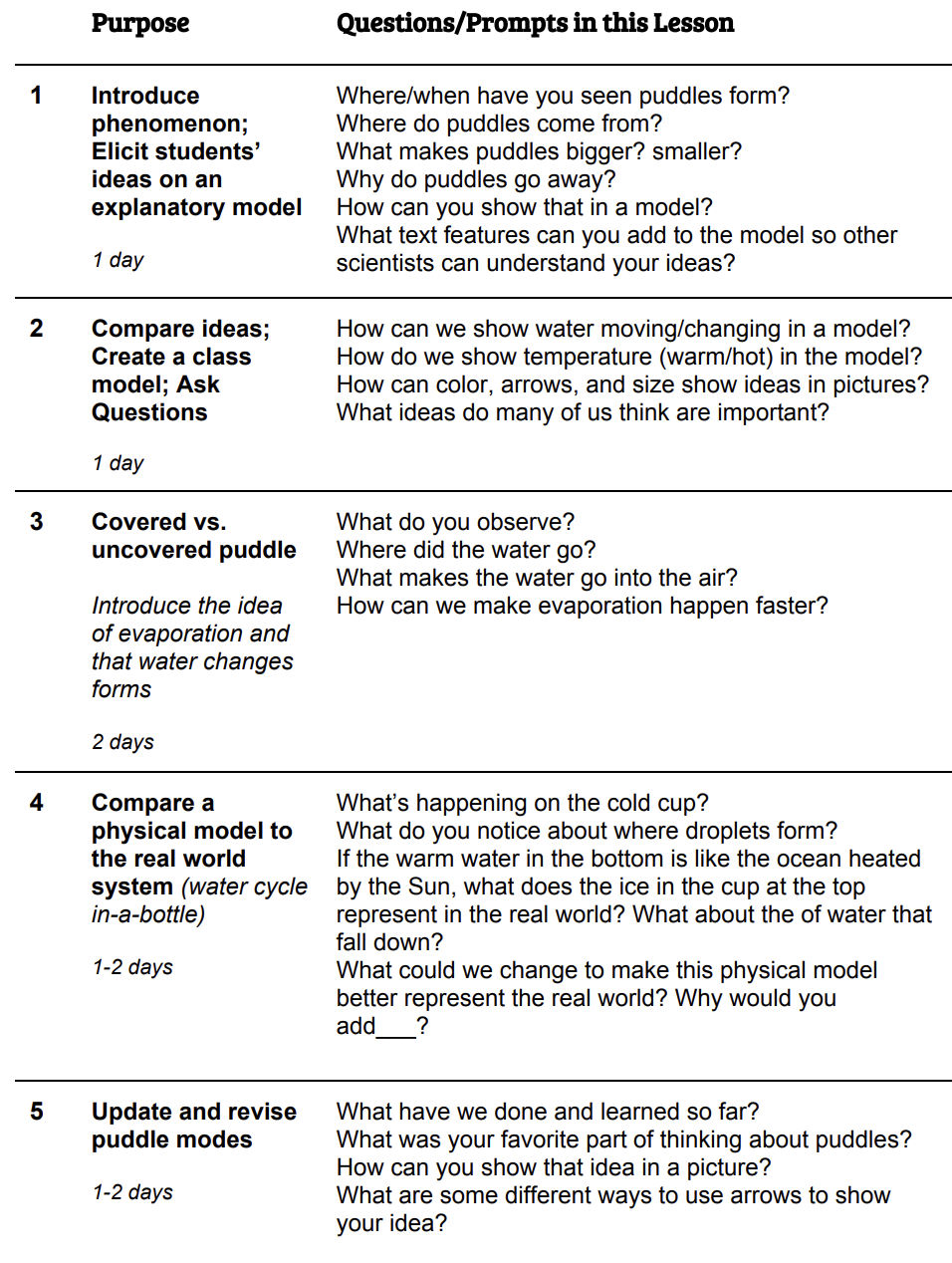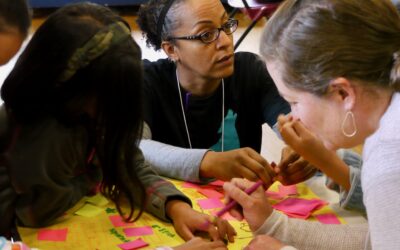What the curriculum does well…
- The mini-unit focuses on a phenomenon likely to be familiar to young children – a puddle appearing, and later disappearing, on the ground. Their real-world experience with puddles and associated weather gives them rich tools for reasoning!
- Students have opportunities to model, share, and work with their own and their peers’ ideas throughout. Their hypotheses and questions can often be taken up during the mini-unit.
- Students are invited to represent ideas in multiple ways, including through movement.
- There are opportunities to make connections to the importance of water for organisms and ecosystems on our planet.
What needs to be done to be justice-focused…
- Puddles as a phenomenon offer rich opportunities for localization – the focal puddle could be one in a schoolyard or a local park, with direct implications for students (like not being able to play outside at recess).
- Water is a resource that we need to conserve and protect. Some Indigenous communities see water as living, in part due to its deeply interconnected flow and central role in supporting ecosystems and other living organisms. Puddles are part of this broader story, and the unit could be explicitly broadened to consider why polluted water is problematic and different ways of promoting water health.
- Further, water is not equally available to all communities. Students can learn about how communities are fighting for equal rights to water, and how water has rights in places such as the Global South.
These critiques are starting places. Adapt tools and resources within this unit and add or change activities based on ideas your students bring up in class, and critique our critiques!






 This site is primarily funded by the National Science Foundation (NSF) through Award #1907471 and #1315995
This site is primarily funded by the National Science Foundation (NSF) through Award #1907471 and #1315995